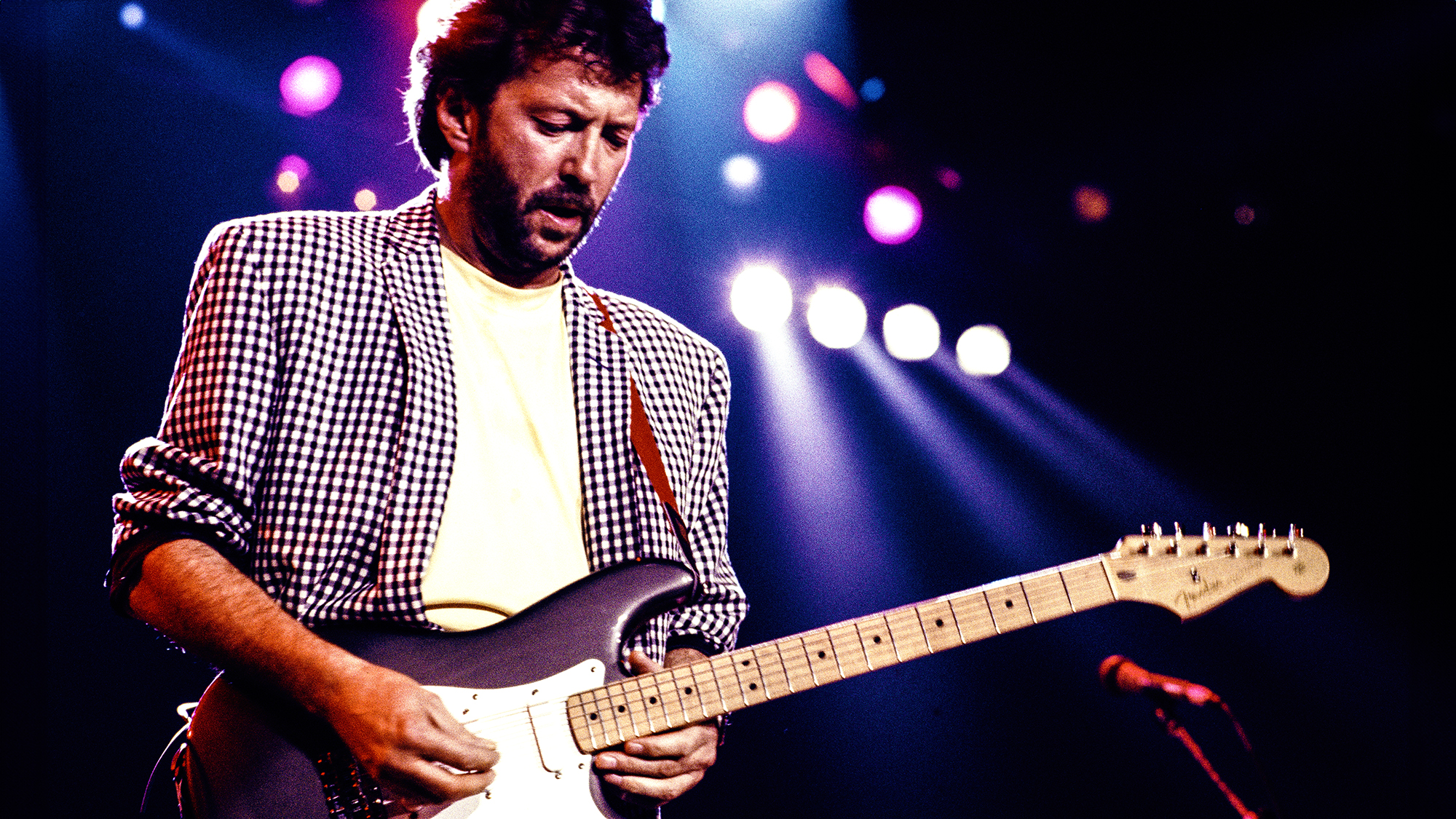Pioneering Chorus: How the Roland JC-120 Jazz Chorus Amp and Boss CE-1 Chorus Ensemble Pedal Set Industry Standards
As the Roland JC-120 celebrates 50 years, we explore all the gear this clean machine gave the guitar world
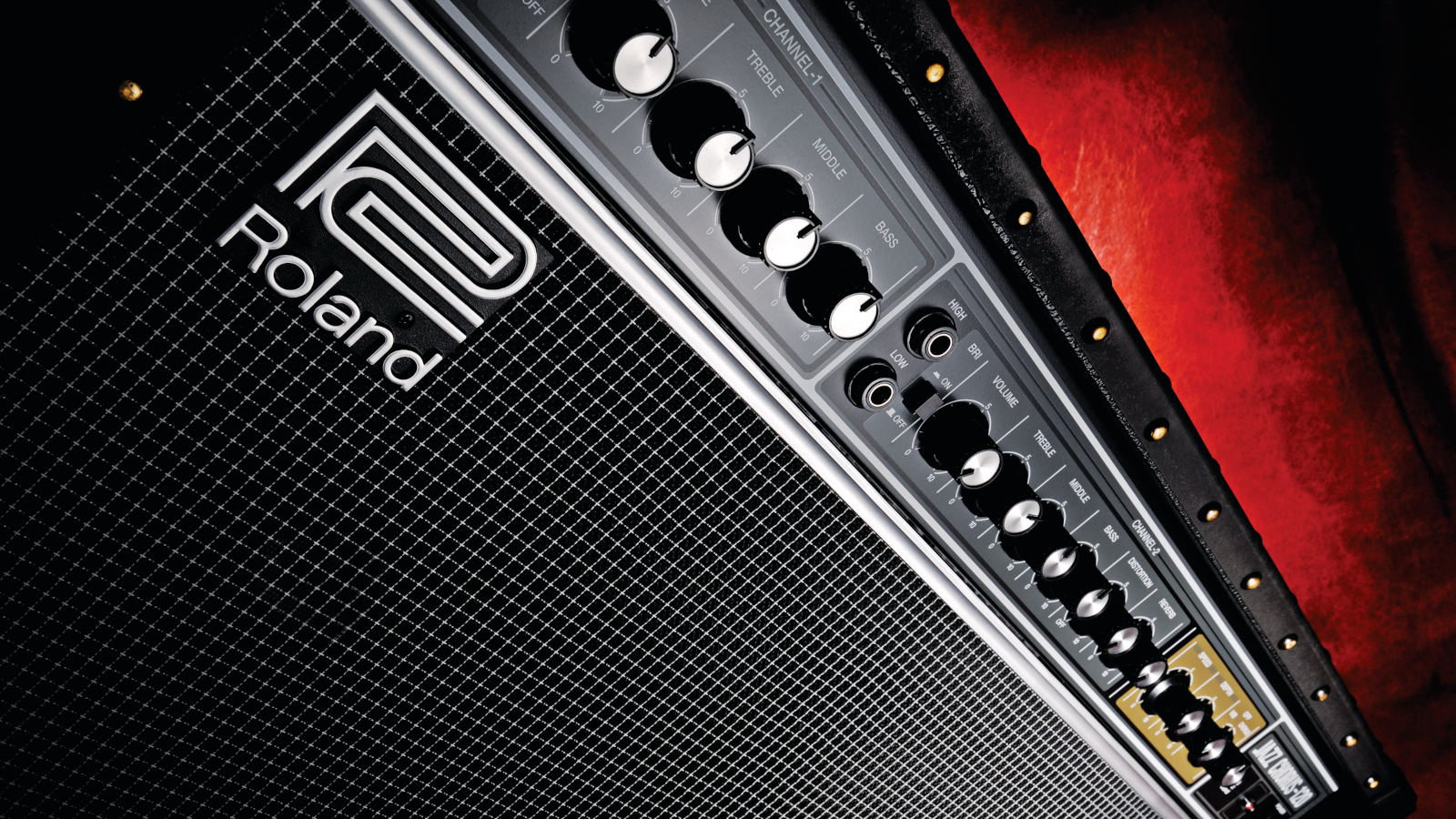
For massive clean power and hypnotic chorus and vibrato effects in a relatively compact package, the Roland JC-120 Jazz Chorus is hard to beat. But we take its existence too much for granted these days. Before its arrival in 1975, most guitarists had given the cold shoulder to the first wave of solid-state amplifiers.
From the mid 1960s onward, major makers in the industry such as Vox, Fender and Gibson tried their damnedest to convince players that tube amps were the way of the past. Their promotional efforts declared they were too fragile, hot, temperamental, heavy and expensive to maintain.
They even insisted the old glowing glass bottles should be abandoned for the way of the future: solid-state transistors. And this was in spite of the fact that each of them already made great tube-based models pro players loved.
Roland approached things differently, and in retrospect that’s no surprise
The problem was, the efforts of these makers and others to replicate the tube-amp tones that rockers had fallen in love with failed abysmally, and guitarists just weren’t buying it.
Roland approached things differently, and in retrospect that’s no surprise. The Japanese company was new, and it took a novel approach to product development that continues to this day.
Rather than attempting to emulate the sounds of existing tube amps, Roland designed a high-quality, dual-60-watt stereo solid-state output stage fed by a relatively high-fidelity solid-state preamp, with built-in stereo chorus/vibrato, reverb and distortion.
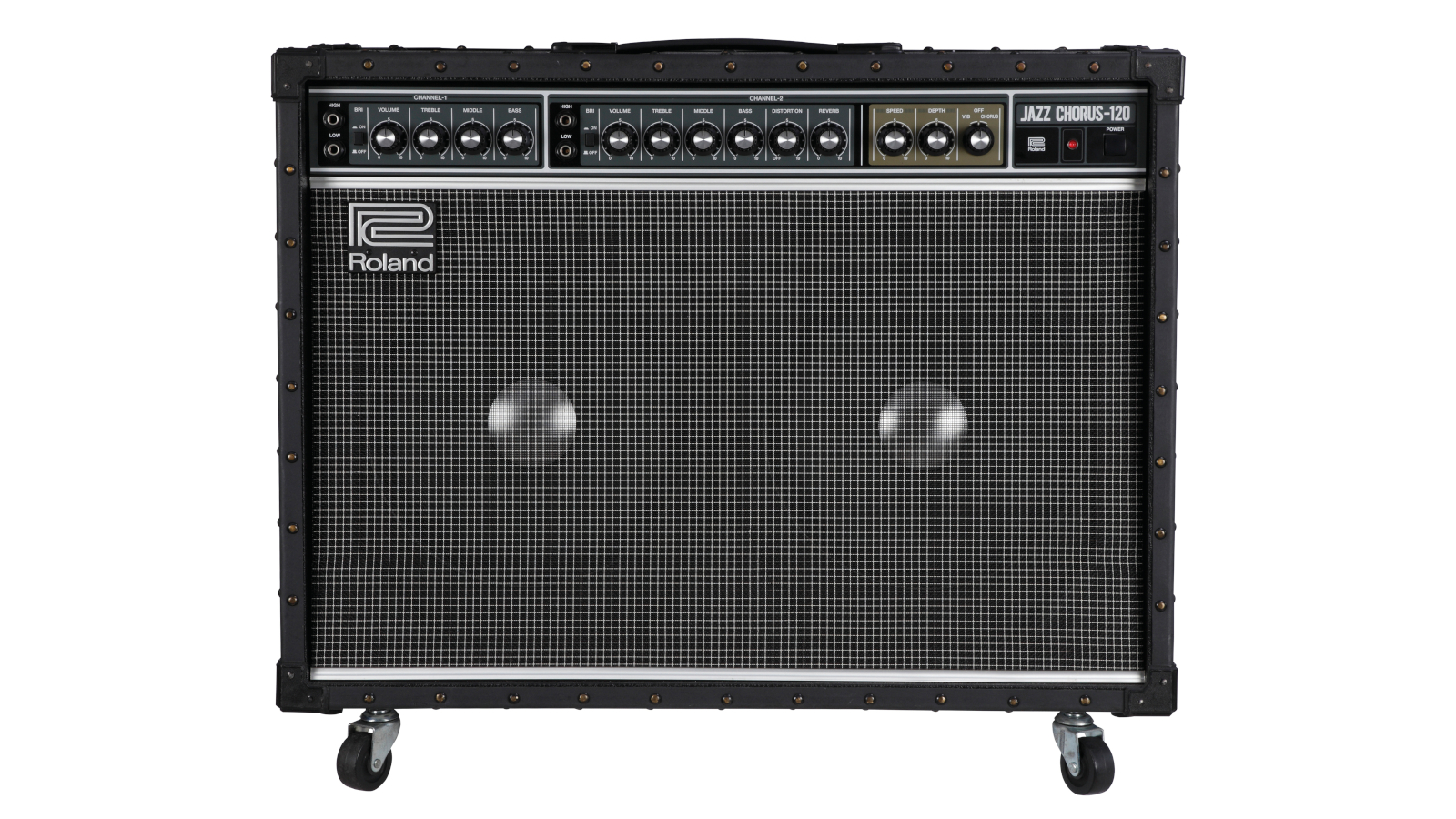
As this feature set suggests, the JC-120 was intended to serve as an all-in-one amplification solution, clearly with hopes that the onboard distortion option would lure some rockers who would otherwise be turned off by the model name’s jazz-certified intentions.
All the latest guitar news, interviews, lessons, reviews, deals and more, direct to your inbox!
As it happened, the distortion effect didn’t launch many hits, but the modulation effects and the JC-120’s rich, clear core sound certainly did, making it a mainstay of professional guitar tone right from its arrival on the scene.
And not only did the JC-120 Jazz Chorus and its sibling amps create countless classic tones on their own – they also established a sound guitarists would continue to chase through the use of other Roland and Boss gear with roots in the JC-120, right up to this day.
Roland Roars In
Given the rousing success of the JC-120 and other Roland products introduced shortly before and after (not to mention the myriad hits to come from its subsidiary Boss), it’s incredible to think that this company was established only three years earlier, in 1972.
Founder Ikutaro Kakehashi already had a decade of experience marketing rhythm machines with his former company, Ace Tone, and indeed the TR-33, TR-55 and TR-77 beat boxes were among the very first products released by his new Osaka-based company.
The following year brought the SH-1000 monophonic analog synthesizer, arguably the first affordable compact keyboard synth produced in Japan, with both the groundbreaking EP-30 electric piano and legendary RE-201 Space Echo landing the year after that.
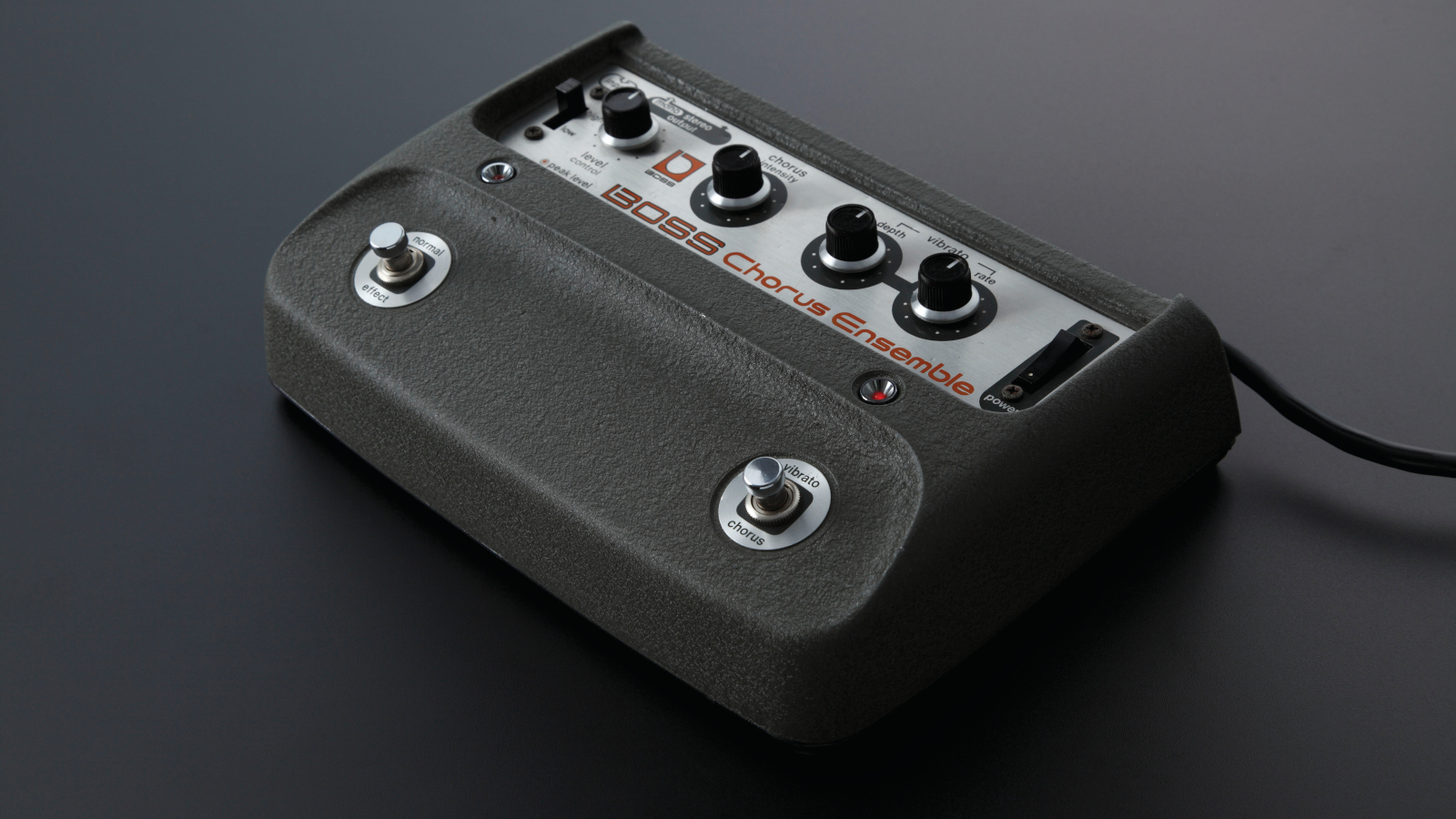
The JC-120 kept the hits coming in 1975, followed by the mammoth System-700 Modular Synthesizer and Boss CE-1 Chorus Ensemble chorus pedal in 1976, and the GR-77 Guitar Synthesizer and first trio of Boss compact effects pedals in 1977. The ’80s brought the TR-808 drum machine; Jupiter 8, JX-3P and DR-50 synths; the RD-1000 electric piano, and… well, you get the picture.
Suffice it to say the Roland name no longer needs any introduction in the world of music electronics, but guitarists encountering the JC-120 for the first time are still likely to declare, “What, they made a guitar amp, too?” Indeed. And in fact, they made several.
The first lineup included the 60-watt JC-60 1x12 alongside the JC-120, with the 160- watt JC-160 4x10 combo and JC-80 1x15 following in 1976. Meanwhile, modern descendants both of the Jazz Chorus itself and the effect within it continue to set the standards for the tones these designs established nearly five decades ago.
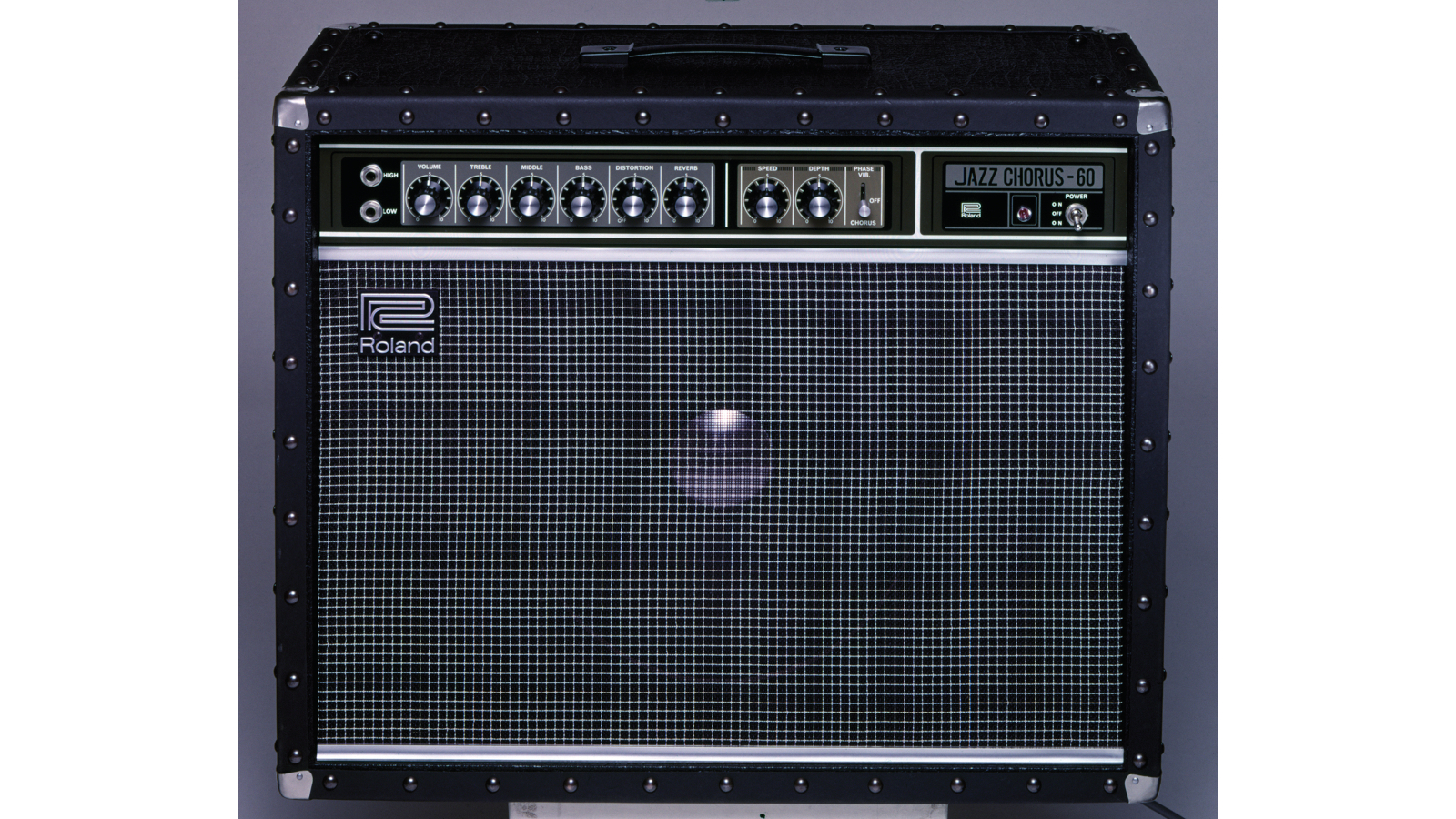
Anti-Hero Amp
Aside from the robust and atmospheric sounds themselves, the JC-120’s early success is owed partly to how well it was pitched to the market of the day, and even more so to that of the decade that followed.
It was introduced in an era when guitarists were surprisingly receptive to new technology – even in the wake of what was arguably the failure of the first few waves of solid-state guitar amps – and it landed at a time when many musicians perceived their bigger, more powerful modern amplifiers as rather workmanlike tools, expecting them to appear as such.
The Jazz Chorus lineup’s business-like black livery and riveted corner and edge protectors lent it a flight-case-like look that might have sunk a new product in a more stylish age. And indeed it was tour-ready right out of the box, constructed inside and out to withstand the rigors of the road.
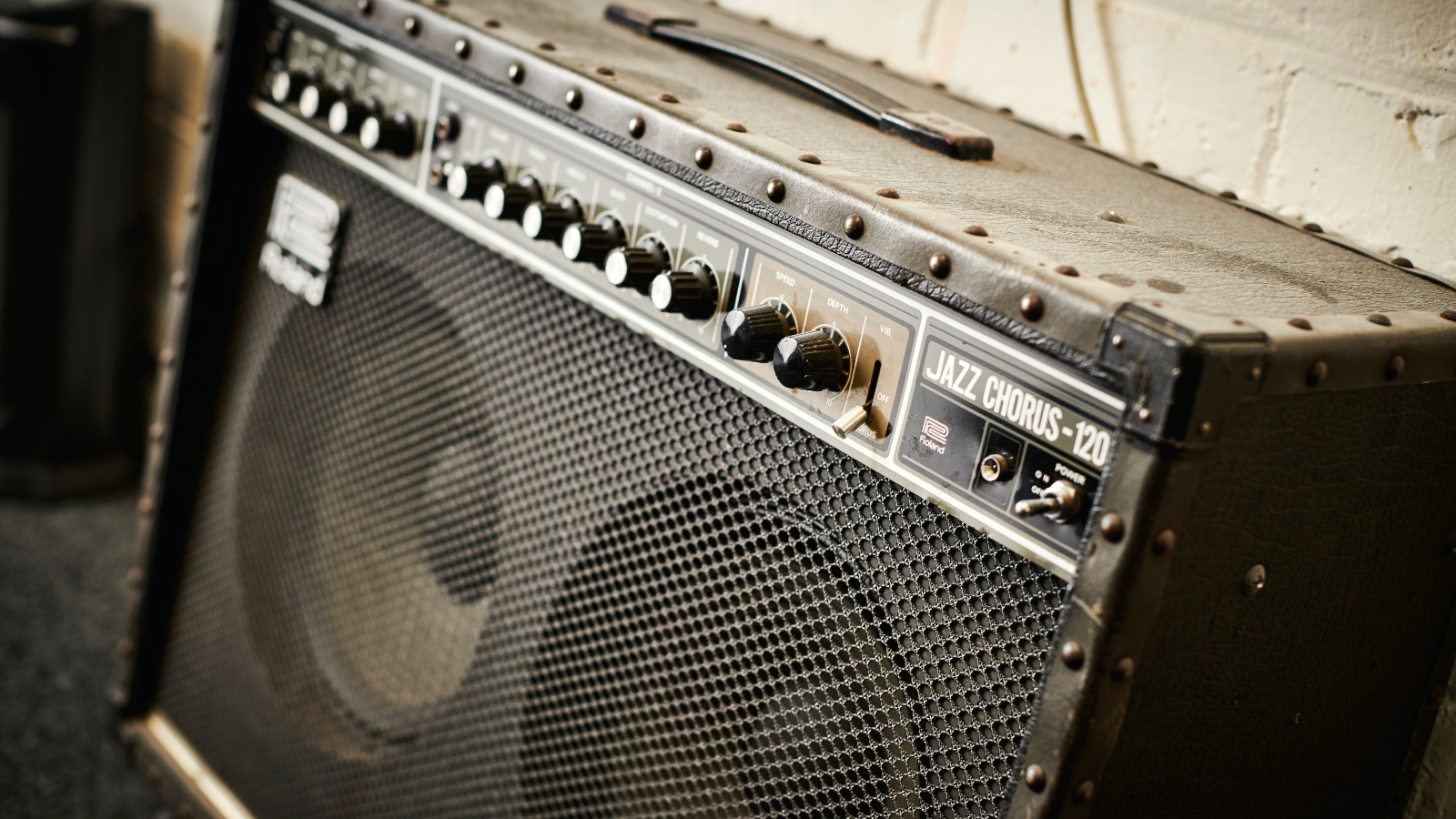
Much of Andy Summers’ tones with the Police epitomized the JC-120’s atmospheric power, and the amp similarly became the core of the sounds of players like Steve Hackett of Genesis, John McGeoch of Magazine and Siouxsie and the Banshees, Robert Fripp, Adrian Belew, Joe Strummer, Robert Smith of the Cure (who used the rare JC-160 4x10 variant) and many others, all within the first decade or so of the model’s existence, with a plethora of future artists to follow in their wake.
The amp’s quick uptake was also thanks in part to the enthusiasm with which it was embraced by many guitar anti-heroes in an age when punk, new-wave and other alternative-minded guitarists were rebelling against the arena-rock norms of poodle haircuts, Marshall stacks and Spandex slacks.
And while the JC-120 excelled in an age when clean was the cool new sound, and was even hipper with lush stereo chorus engaged, the amp’s power and projection would appeal to a host of guitarists who discovered its ability to deliver stage-rumbling overdrive amid a dense rock mix.
Witness the onslaught of Billy Duffy of the Cult, Bob Mould of Hüsker Dü and Sugar, or Wes Borland with Limp Bizkit for examples of what this creation can do with some oomph applied to the front end.

Pedal Points
The Jazz Chorus range is significant not only for the music made by the amp itself but also for the seminal chorus sound it introduced to the world.
Granted, the JC-120’s clean, rich, 120-watt stereo output through a robust 2x12 cab presents a stunning soundstage for the textured, emotive shimmer delivered by Roland’s groundbreaking chorus effect. But the company’s transmutation of this circuit in 1976 into the first Boss pedal ever released, the CE-1 Chorus Ensemble, made the sound available through other eager guitarists’ rigs of choice.
Deep, thick, spatial and multi-dimensional, the CE-1 sounded great in mono, but otherworldly in stereo, whether through two guitar amps or one JC-120.
In addition to being the first of the line of legendary chorus pedals, and an inspiration for countless others from rival manufacturers, the CE-1 was also the first chorus pedal from any maker and is often said to be the first effect to use bucket brigade device (BBD) chips in its circuit.
It was housed in a much larger and heavier enclosure than most of the more common pedals today, but so were many of the more complex effects of the ’70s.
It carried two foot switches – one for effect on/off and another to switch between its vibrato and chorus effects – along with a level control, a control for chorus intensity, two knobs for vibrato depth and rate, a power switch to engage its hard-wired AC power and a high-/low-input switch.
As the industry exploded with chorus effects, and the sound virtually engulfed the pop and rock airwaves, Roland and Boss continued to set the standard.
As the industry exploded with chorus effects, and the sound virtually engulfed the pop and rock airwaves, Roland and Boss continued to set the standard. Boss unveiled its ubiquitous compact pedal line in 1977, and the company’s brightly colored renditions of just about every effect under the sun rolled out continually thereafter.
In 1979, the CE-2 Chorus joined the ranks, taking a similar sound into a compact format that sacrificed the vibrato effect and the stereo outputs.
Stereo chorus and vibrato did arrive in compact pedal form in 1982, however, with the updated Boss CE-3.
Even so, the CE-1 itself remained in production until around 1984, while an ever-evolving range of both analog and digital chorus pedals joined the lineup in the years to follow.
Another Dimension
With the demand for chorus effects exploding in the late ’70s, Roland released the SDD-320 Dimension D stereo analog chorus rack unit in 1979 to take a high-quality version of the effect to the studio world.
Quite different from the CE-1 and its descendants, the Dimension D was considered a subtler effect, intended more for enhancing the spatial dimension and stereo width of just about any instrument or vocal, rather than producing the more obvious modulation and movement of traditional chorus pedals.
Major artists like Peter Gabriel, Brian Eno, Talking Heads and Kate Bush quickly put it to work on many recordings, but plenty of guitarists also tapped into its lush sound both live and in the studio.
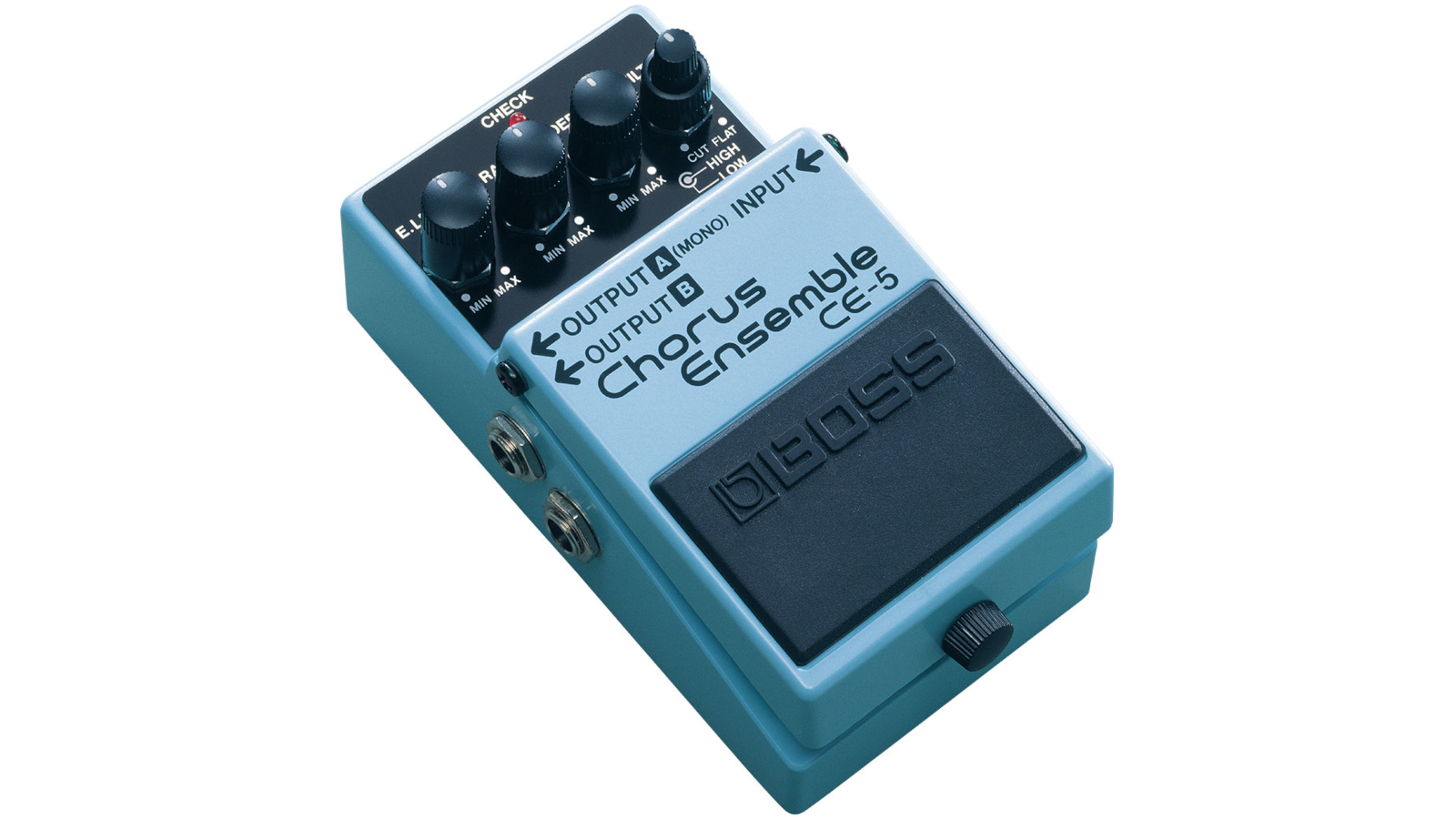
Alan Murphy, guitarist with Kate Bush and Go West, frequently recorded through the SDD-320, and Andy Summers added one to his touring rack for the Police’s Ghost in the Machine tour of 1981-’82.
The Dimension D was also different from existing chorus pedals in its use of four push buttons and no control knobs, allowing for increasing depths of the effect, and bypass.
The circuit itself used BBDs in two independent delay lines, out of phase, blended with a dry signal, to create a sound that was less motion and more dimension, totally avoiding the more obvious and occasionally obtrusive wobble of chorus effects designed more for depth and speed.
In 1985, the Boss DC-2 Dimension C pedal presented the same sound and functionality in a traditional compact floor enclosure that guitarists could include on their boards. Both the original rack-mounted Dimension D and the Dimension C pedal have become highly collectible effects in recent years.
Boss chorus went digital in 1988 with the DC-3, and this new technology dominated much of the modulation and delay world well into the ’90s.
Often considered cleaner and more precise than analog chorus, with what some players hear as a modern “metallic” edge to it, digital chorus was sometimes derided by others as being colder and more sterile than the variety produced by BBD chips.
Several Boss digital chorus pedals can, of course, sound fantastic when used to their strengths, but the resultant clamor for new analog releases in the ’90s and early ’00s was partly a result of what turned off many guitarists regarding digital units.
Current Issue
Both Roland and Boss fill guitarists’ myriad chorus needs with present-day renditions of the classics that established the sound 48 years ago. The JC-120 is still available in its original form, with the contemporary bonus of a stereo FX loop to incorporate outboard effects into the amp’s natural spatiality.
At the end of 2022, the company announced a Limited Edition 50th Anniversary JC-120 to mark the occasion. And, although mono sibling combos like the JC-60 and JC-80 have been discontinued, the recent-issue JC-40 and JC-22 are truer to original form by offering the full stereo effects in dual-speaker formats.
Delivering 20 watts per-side into two 10-inch speakers, the JC-40 further compacts the format by including only a single channel with the original Jazz Chorus control layout, but the addition of stereo inputs accommodates stereo instruments and front-of-amp effects pedals.
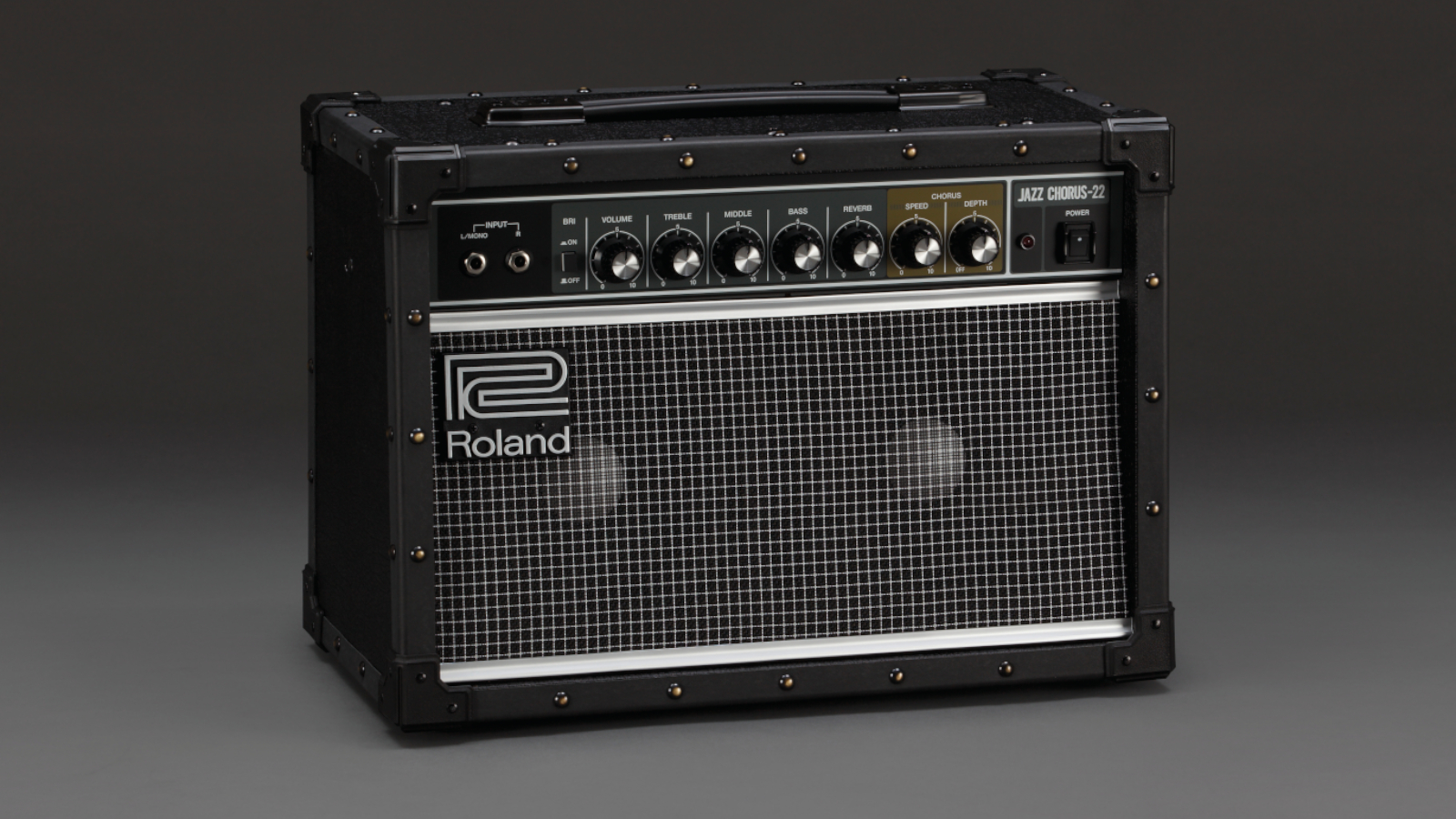
In addition, it has a stereo FX loop to further enhance the left-right soundstage as desired.
The even smaller JC-22 offers 30 watts of power (15 watts per side) into two six-and-a-half-inch speakers, with the same stereo connectivity but a little more savings with the inclusion of a chorus effect only in the modulation section, and no vibrato.
For current-issue, state-of-the-art stereo chorus in pedal form, the CE-2W from Boss’s Waza Craft line combines the essential elements of both the CE-1 and CE-2 sound via true analog BBD delay lines with added functionality to both modes, all in stereo.

Released in 2018 in the face of climbing prices for original DC-2 Dimension C pedals made between 1985-’89, the DC-2W is another Boss Waza Craft pedal that combines enhanced functionality with the sounds of past classics.
With a switch to flick between DC-2 and SDD-320 modes, its four push-button selectors can be used two at a time rather than singly, enabling a full 20 possible settings.
Having developed from hot new things to celebrated pieces of gear whose sound defined an era, the JC-120 Jazz Chorus amplifier and CE-1 Chorus Ensemble pedal have become essential ingredients for guitarists in nearly every genre, and it’s hard to imagine them disappearing from our boards any time soon.

Dave Hunter is a writer and consulting editor for Guitar Player magazine. His prolific output as author includes Fender 75 Years, The Guitar Amp Handbook, The British Amp Invasion, Ultimate Star Guitars, Guitar Effects Pedals, The Guitar Pickup Handbook, The Fender Telecaster and several other titles. Hunter is a former editor of The Guitar Magazine (UK), and a contributor to Vintage Guitar, Premier Guitar, The Connoisseur and other publications. A contributing essayist to the United States Library of Congress National Recording Preservation Board’s Permanent Archive, he lives in Kittery, ME, with his wife and their two children and fronts the bands A Different Engine and The Stereo Field.





